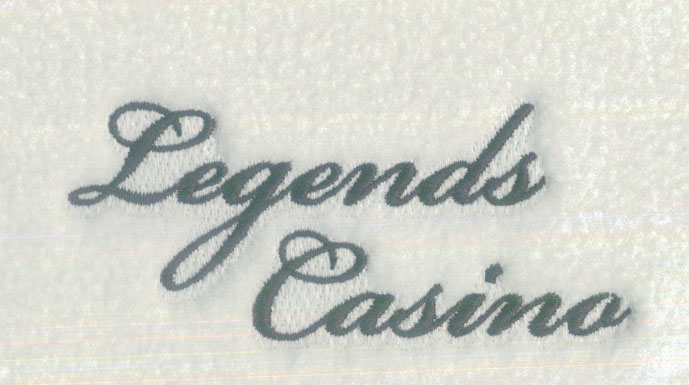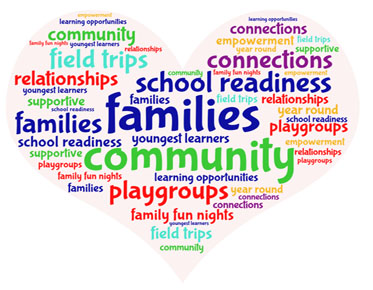Exploring the World of Embroidery Fonts: Typography in Stitches
Embroidery is an art form that has been treasured for centuries. From intricate patterns to beautiful designs, it has graced fabrics, garments, and textiles in various forms. One of the key elements in embroidery that often goes unnoticed but plays a significant role is typography or embroidery fonts. These fonts turn ordinary text into stunning, intricate designs stitched onto fabric. In this comprehensive guide, we will delve into the world of embroidery fonts, exploring their importance, types, and how to use them to enhance your embroidery projects.
The Significance of Embroidery Fonts
Typography is a powerful visual element that can convey messages, emotions, and aesthetics. When it comes to embroidery, fonts transform words into art. Here's why embroidery fonts are significant:
● Personalization: Embroidery fonts allow you to personalize items with names, monograms, or meaningful phrases. From customizing gifts to adding a personal touch to your garments, embroidery fonts make it unique.
● Brand Identity: For businesses and organizations, typography in embroidery helps establish brand identity. Consistent fonts and logos create a recognizable and professional look.
● Design Enhancement: Embroidery fonts can elevate the design of any project. They turn plain text into visually appealing elements, adding elegance and style.
● Storytelling: Typography in embroidery can tell a story. It can be a reminder of special moments, a representation of cultural heritage, or a symbol of affiliation.
Types of Embroidery Fonts
Embroidery fonts come in various styles and types, allowing you to choose the one that suits your project. Here are some common types:
1. Block Fonts: Block fonts have bold, thick lines and are often used for monograms and logos. They are easy to read and provide a strong, solid appearance.
2. Script Fonts: Script fonts mimic handwritten cursive or calligraphy. They are elegant and perfect for adding a touch of sophistication to projects like wedding invitations.
3. Serif Fonts: Serif fonts have small decorative lines (serifs) at the ends of the characters. They offer a classic and traditional look, ideal for formal projects.
4. Sans-serif Fonts: Sans-serif fonts lack the decorative lines of serif fonts. They are modern, clean, and easy to read, making them suitable for a wide range of applications.
5. Specialty Fonts: Specialty fonts include themed or decorative fonts, such as those with holiday motifs or themed shapes. They are perfect for adding a unique touch to specific projects.
Choosing the Right Embroidery Font
Selecting the right embroidery font is essential to ensure your project achieves the desired effect. Here's how to choose the perfect font:
1. Consider the Project: Think about the purpose of your embroidery. Is it for a formal occasion like a wedding, or is it a fun and playful design? Match the font to the project's tone.
2. Readability: Ensure the font is readable, especially for text that needs to convey a message. Fancy script fonts might look beautiful but can be challenging to read in small sizes.
3. Proportion and Placement: Consider the proportion of the font in relation to the size of your project. Also, think about where the text will be placed on the item.
4. Style Consistency: If you're working with a brand or organization, ensure the font aligns with their branding guidelines to maintain style consistency.
Tips for Using Embroidery Fonts
To create stunning embroidery projects, follow these tips when using embroidery fonts:
1. Digitization Quality: Invest in high-quality digitization. Well-digitized fonts result in cleaner, more precise stitches and a polished final product.
2. Thread and Fabric Selection: Choose the right thread colors and fabric to complement your font. Consider the contrast between the thread and fabric to ensure visibility.
3. Stitch Density: Adjust the stitch density to match the fabric's weight. Dense stitches on delicate fabrics may cause puckering.
4. Test Before Stitching: Always stitch a sample on similar fabric before embroidering your final project. This helps identify any issues or adjustments needed.
5. Hooping and Stabilization: Proper hooping and stabilizing the fabric are crucial for clean embroidery. Ensure the fabric is taut but not stretched.
Embroidery Fonts
Choosing the right embroidery font is crucial to achieving the desired aesthetic and impact for your project. Here are the best embroidery fonts to consider:
1. Amastery Script
● An elegant script font with intricate details, perfect for formal events and monograms.
2. Varsity
● A classic block font with a sporty vibe, often used on athletic apparel and accessories.
3. Lucida Sans
● A sans-serif font known for its clarity and readability, ideal for everyday items.
4. Empire Monogram
● A monogram font that features bold, intertwined letters, adding a touch of luxury.
5. Quickpen
● A casual, handwritten script font for a friendly and approachable feel.
6. Athena
● A graceful serif font suitable for formal invitations and elegant decor.
7. Helvetica Neue
● A modern sans-serif font recognized for its clean lines and versatility.
8. Circle Monogram
● A monogram font with circular initials, creating a stylish and personalized effect.
9. Varsity Playbook
● A sporty block font with a playful edge, often used on children's clothing.
10. Calligraphy
● An ornate script font that adds a touch of opulence to any project.
Tools for Working with Embroidery Fonts
To work effectively with embroidery fonts, you'll need the right tools:
1. Embroidery Machine: Invest in a quality embroidery machine capable of handling different font styles and sizes.
2. Digitizing Software: If you're designing custom fonts or logos, digitizing software is essential. It allows you to create and edit embroidery designs.
3. Embroidery Hoops: Various sizes of embroidery hoops are needed to secure the fabric while stitching.
4. Stabilizers: Different fabrics require various stabilizers to prevent stretching or distortion during embroidery.
5. Thread and Needles: High-quality embroidery thread and needles ensure smooth stitching and vibrant colors.
Conclusion
Typography in embroidery, through the use of
embroidery fonts, transforms mere words into intricate works of art. It adds a
personal touch, enhances brand identity, and elevates the design of any
project. Whether you're embroidering monograms, logos, or decorative elements, choosing the right font is
crucial. By following the tips and exploring popular fonts, you can create
embroidery projects that are not only visually appealing but also meaningful
and unique. So, let your creativity flow, and let embroidery fonts be the
brushstrokes of your textile masterpiece.



